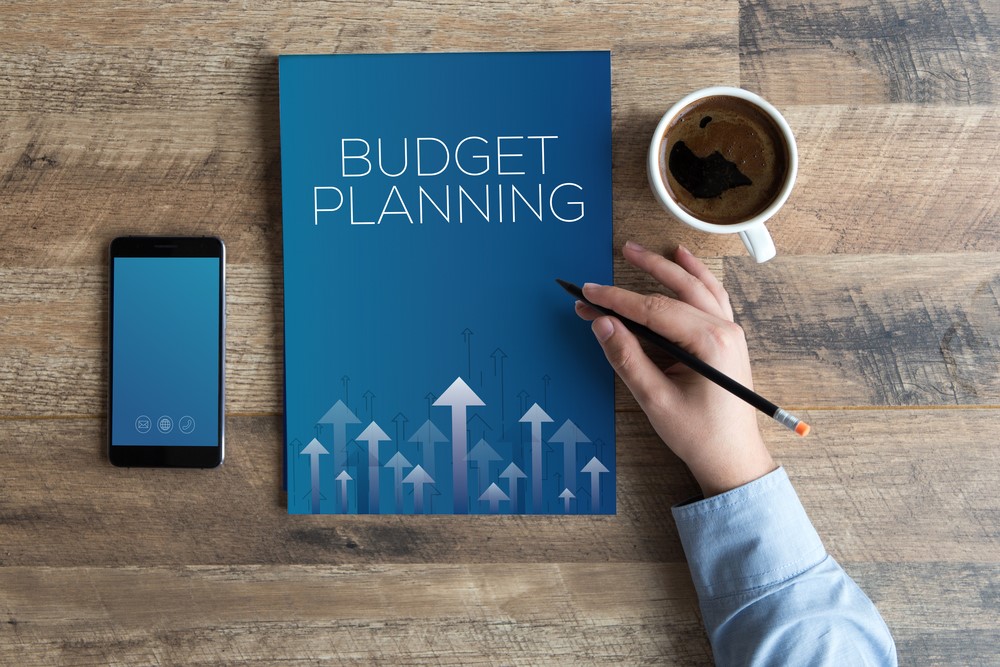There’s nothing quite like the feeling of starting and running your own business. The thrill of making your first sale or opening the doors of your store for the first time is unparalleled. Throughout your entrepreneurial journey, you’ll have countless exciting experiences.
Creating a small business budget is unlikely to be one of the most exciting experiences of your journey, but it’s absolutely crucial. Just like a business plan, putting together a detailed business budget is vital to running a business. A well-crafted budget can be the difference between a thriving business and a struggling one. Did you know that over 80% of businesses fail due to cash flow problems and lack of planning?
Business budget planning lets you completely grasp your business income and expenses when you start your business. It helps you to prepare for whatever the future holds. In this guide, we’ll walk you through the ins and outs of creating a business budget that works for you. We’ll dive into what a business budget is and go through the steps of creating one. We’ll also include a glossary of key terms.
Ready to create your business budget?
Understanding Business Budgeting

The task of creating a budget can be pretty daunting. So before diving into the granular budgeting elements, let’s demystify what a business budget actually is. In simple terms, a budget is a financial plan that outlines your business’s projected income and expenses over a certain period.
Think of your budget as your financial roadmap, guiding you to your business goals and keeping you on the right path. A well-planned, comprehensive budget will help you:
- Control your cash flow and save money
- Make informed decisions
- Measure your business’s performance
- Identify potential issues
- Forecast future financial needs and growth opportunities.
While detailed business budgeting may seem more important for larger companies, small businesses should take the time to create a budget for their business finances as early as possible. Not only does an operating budget help you to run your business, but it can help convince financiers to invest in your company.
5 Simple Steps to Creating Your Business Budget

Now that we’ve covered the basics let’s get down to the specifics. Here’s a step-by-step guide to creating your business budget:
Step 1 — Estimating Revenue
The first step in creating a business budget is to estimate your revenue. One of the most crucial elements of this stage is to be realistic with your estimates. If you overestimate your revenue at this stage, it can easily lead to overspending, while underestimating can hinder your growth.
You can estimate your revenue by looking at past sales data if you’re an existing business. Look at all of your sales data from the time your company has existed and use this to put together your estimate.
If you’re a new business or you’re in the process of setting up a new business, this can be a little more tricky, but it’s still achievable. You can base your estimates on your market research (from your business plan) and on industry benchmarks. Once your business has been running for a little while, you can reevaluate your budget to ensure that it’s accurate.
Step 2 — Identifying Fixed Costs
Next up is fixed costs. Fixed costs are expenses that remain relatively unchanged regardless of your business’s output. They include things like:
- Rent
- Salaries
- Insurance
- Utility bills.
Identifying your fixed costs gives you an idea of the minimum amount you need to keep your business running. Having a clear idea of your fixed costs lets you determine your break-even point — the point where your business’s income equals its expenses.
Step 3 — Understanding Variable Costs
After fixed costs, we have variable costs or variable expenses. No big surprises here, but variable costs are expenses that change depending on your business’s level of activity and external factors. These costs can include:
- Raw materials
- Shipping costs
- Sales commissions
- Corporation tax and VAT.
In many cases, the more products you sell, the higher your variable expenses. Understanding your variable costs helps you to plan for changes in your output. It also helps you understand how scaling your business might impact your bottom line.
Step 4 — Accounting for One-Time and Unexpected Costs
One-off costs are easy to forget when you’re putting small business budgets together, and they’re tricky to account for. These are costs that don’t occur regularly but can significantly impact your budget. Examples of unexpected expenses could include:
- Purchasing new equipment
- Investing in a software upgrade
- Equipment repairs
- Recruitment.
Budgeting for one-off costs can be challenging as you can never be sure what you’ll need to spend money on. But by factoring them into your budget, you’re less likely to be caught off-guard by these costs. As your business grows, you’ll get a better idea of unexpected business costs and can budget for them better.
Step 5 — Calculating Profit
Finally, it’s time to calculate how much profit your business will make. To do this, you must subtract your total expenses (fixed and variable costs and one-time expenses) from your total revenue. Voila! That’s your profit.
Your profit is a key indicator of your company’s financial health. It will help guide your future investment decisions and is the ultimate measure of whether your business is making more than it’s spending. Due to this, you mustn’t over-egg your profits. While it might be tempting, it’s important that you’re honest, as it will affect your business decisions going forward.
Implementing Your Business Budget

Creating your business budget is just the first step. The important work happens when you start to use it to guide your business decisions. It’s vital that you regularly review and update your budget to reflect your current business situation. A budget is a working document and not a one-and-done type deal.
But throughout the process, don’t worry if your actual numbers don’t line up exactly with your budget. A business budget is a plan, not an exact science. Use any deviations from your budget along the way to inform any future budgets you put together and learn from your mistakes.
It’s also important to remember that you don’t need to do it all alone; plenty of help is available. You can easily find a business budget template online and use it as a starting point. Or, if you’re looking for more comprehensive help, you can hire an accountant or financial assistant. Having an accurate business budget is a crucial element for all businesses, so investing both time and money in it is a smart move.
Here are a few tips for successful business budgeting:
- Factor in some slack — Unexpected expenses can pop up. Having a buffer in your budget can help you handle these surprises without stress.
- Be ready to cut costs — If times get tough, know where to trim expenses without hurting your business’s core operations.
- Shop around for services/suppliers — Don’t settle for the first option. You might find better deals or quality elsewhere.
- Keep a contingency fund — It’s always a good idea to set aside some money for emergencies.
Business Budgeting Glossary
Budgeting can be a daunting and complex prospect for new business owners. This guide gives a good overview of how to create a small business budget, but along the way, you’ll probably come across terms you don’t recognise or understand. We’ve put together some of the most common budgeting terms to help clarify things:
- Revenue — The total amount of money your business brings in from its activities.
- Expenses — The costs incurred by your business in its operation.
- Profit — The financial gain your business makes after subtracting all expenses from revenue.
- Fixed costs — Costs that do not change with the level of output (e.g., rent, salaries).
- Variable costs — Costs that change based on the output level (e.g., raw materials, shipping fees).
- Cash flow — The net amount of cash moving in and out of your business.
- Master budget — A comprehensive financial planning document that includes all of the smaller budgets within your business.
- Operating budget — A detailed projection of all estimated income and expenses based on forecasted sales revenue during a given period (usually a year).
- Capital budget — A budget that covers investments in long-term assets, like machinery or real estate.
- Contingency fund — A reserve of money set aside to cover unexpected costs.
Set Your Business up for Success with Expert Help
Budgeting is just one element of setting up and running a business. If you’re in the process of starting your own business, it’s important to remember that you’re not on your own, and there’s plenty of help and advice out there.
At Mint Formations, we specialise in helping businesses get off to the right start. We do this by offering a range of services that help you every step of the way, including:
- Registering your limited company
- VAT registration
- PAYE registration
- Virtual office addresses
- Setting up a business bank account
- Accountancy services.
If you’re looking for any assistance setting up and running your company, we’re here to help. Our friendly team can offer advice for your entrepreneurial journey, and our blog and knowledge base is packed with tips and tricks.
Register your limited company with Mint Formations today and start your business the right way. If you have any questions, please get in touch with our team, and we’ll do everything we can to help.

